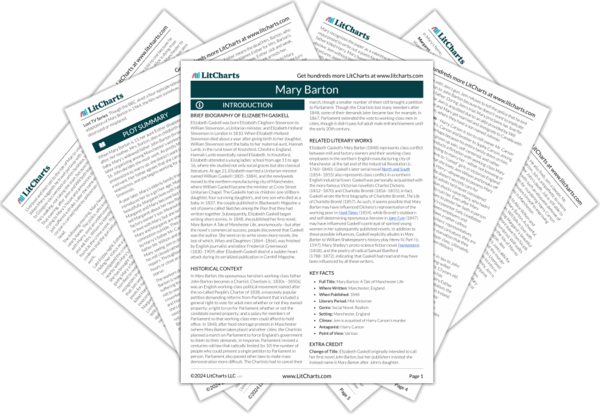Presumably if Mary knew that Esther’s daughter had died young, she would express interest and sympathy when Esther mentions her child. Yet without the relevant facts about Esther’s life, Mary remains unempathetically focused on her own immediate problems. Thus, the novel suggests that to be appropriately empathetic toward another person, one needs the relevant facts about that person’s life.
